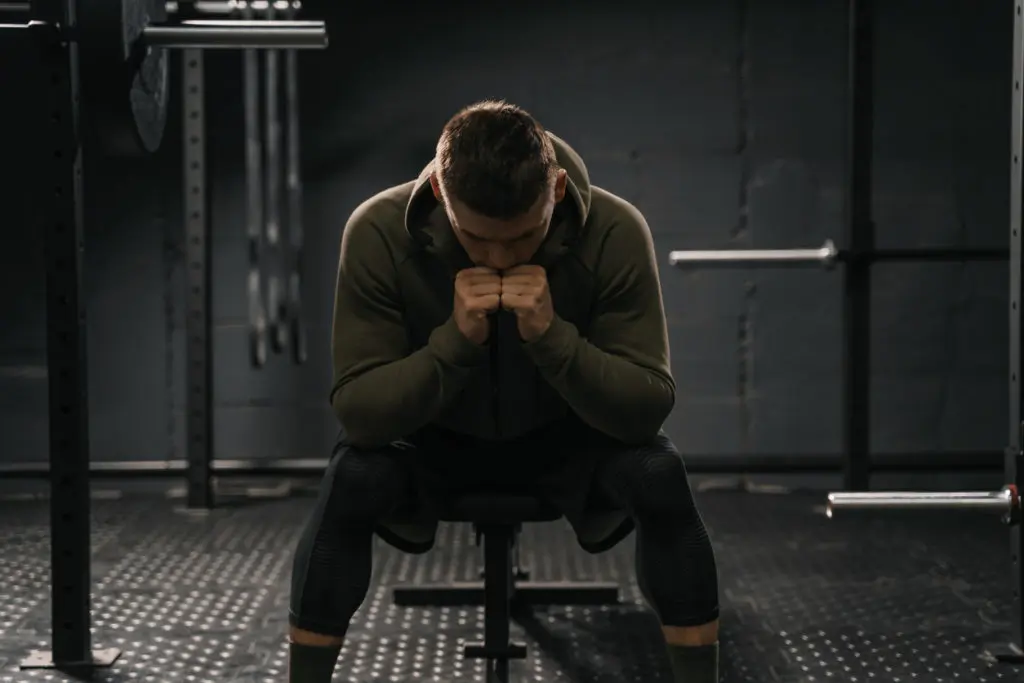Building strong, well-defined shoulders is essential for creating a balanced, athletic physique. Your shoulder muscles, or deltoids, play a crucial role in upper body movement, strength, and stability. Whether you’re aiming to improve your strength, aesthetics, or posture, targeting the shoulder muscles with effective workouts is key. This guide dives deep into 10 expert tips to help you optimize your shoulder workout routine and build those impressive delts.
Understanding Shoulder Anatomy
Before jumping into tips and exercises, it’s important to understand the basic anatomy of the shoulder. The shoulder consists of three primary heads: the anterior deltoid (front), located at the front of your shoulder and responsible for lifting the arms forward and internal rotation; the lateral deltoid (middle), the middle part of your shoulder that plays a vital role in arm abduction (lifting the arm out to the side); and the posterior deltoid (rear), found at the back of your shoulder and essential for pulling movements and external rotation. Each part of the shoulder has a distinct function, and a well-rounded workout routine should target all three heads to ensure balance and strength.
Now, let’s break down the most effective tips to ensure you’re maximizing your shoulder training.
1. Prioritize Compound Movements for Maximum Strength Gains
Compound movements are multi-joint exercises that target several muscle groups simultaneously. When it comes to shoulder workouts, compound movements should be at the core of your routine. Exercises like the overhead press (also known as the military press or shoulder press) and push press engage the anterior, lateral, and posterior deltoids, along with supporting muscles like the triceps and upper chest. These exercises not only build strength but also improve shoulder stability and coordination.
To perform the overhead press, begin by standing with a barbell or dumbbells at shoulder height, elbows slightly in front of your body. Press the weight overhead, ensuring your core is braced and your lower back stays neutral. Slowly lower the weight back down to shoulder height. This movement recruits all three heads of the deltoid and should be a staple in any shoulder training program.
2. Don’t Neglect Isolation Movements
While compound lifts are essential for building overall strength, isolation movements play a critical role in targeting specific parts of the shoulder. Isolation exercises focus on one joint and primarily recruit a single muscle group. For shoulders, movements like the lateral raise, front raise, and reverse fly are excellent for honing in on individual heads of the deltoid, ensuring balanced muscle development.
In particular, lateral raises are ideal for targeting the lateral head of the shoulder, helping to create the width and rounded look that many people desire. Grab a pair of dumbbells, stand with your feet shoulder-width apart, and lift your arms out to the sides until they are parallel with the floor. Keep a slight bend in your elbows and control the movement both on the way up and down.
3. Focus on Progressive Overload
If you want to see continuous progress in your shoulder workouts, you need to apply the principle of progressive overload. This simply means gradually increasing the resistance or intensity of your workouts over time to challenge your muscles and force them to adapt. Without progressive overload, your muscles will eventually plateau, and your gains will stall.
You can apply progressive overload by increasing the weight you’re lifting, adding more reps or sets to your workout, or reducing rest times between sets. It’s important to challenge your shoulders with heavier weights but be mindful of form, as poor form can lead to injury, especially in a delicate joint like the shoulder.
4. Train All Three Deltoid Heads Equally
One common mistake in shoulder training is overemphasizing the anterior deltoid while neglecting the lateral and posterior heads. The anterior deltoid already receives plenty of work from pushing exercises like bench presses and push-ups, so it’s crucial to focus on the lateral and posterior heads to avoid muscle imbalances.
Incorporate exercises like reverse pec deck flys, face pulls, and bent-over rear delt raises to strengthen the posterior deltoid. For the lateral deltoid, focus on variations of lateral raises and Arnold presses to target the middle part of your shoulders. Balancing your shoulder routine ensures all heads develop evenly, reducing the risk of injury and creating a more aesthetic shape.
5. Perfect Your Shoulder Press Technique
The shoulder press is often the bread and butter of shoulder workouts, but it’s also an exercise where technique matters greatly. Poor form can result in unnecessary strain on the shoulder joint and back, increasing the risk of injury. To perform the shoulder press safely and effectively, focus on keeping your core tight and your lower back neutral throughout the movement. Don’t arch your back excessively or lean too far forward, as this can place strain on the spine.
Use a full range of motion, lowering the weight down to shoulder level before pressing overhead. If you find that your lower back is straining, try doing the shoulder press seated or using a slight backrest for added support. A good form will maximize muscle activation and help you avoid injury.
6. Increase Time Under Tension
Time under tension refers to the amount of time your muscles are actively working during a set. Increasing time under tension can be a powerful technique for building muscle size and endurance. To do this, you can slow down the eccentric (lowering) portion of the exercise, hold the weight at the top of the movement, or add pauses during the lift.
For example, when performing lateral raises, try holding the dumbbells at shoulder height for 2-3 seconds before lowering them back down slowly. This increases the total time your muscles are under tension, promoting greater muscle growth. Applying this principle to other shoulder exercises like the overhead press and front raises can enhance overall shoulder development.
7. Train Shoulders Twice Per Week for Optimal Growth
Unlike larger muscle groups such as legs or back, shoulders recover relatively quickly. To stimulate growth without overtraining, aim to train your shoulders twice per week, allowing 48-72 hours of rest between sessions. This frequency ensures you’re challenging the muscles often enough to promote growth, but not so frequently that you risk overuse injuries.
On one training day, you can focus on strength-based movements like overhead presses and push presses with heavier weights and lower reps. On the second day, incorporate more isolation and hypertrophy-focused exercises such as lateral raises, front raises, and rear delt flys with lighter weights and higher reps. This approach allows you to target the shoulders from different angles and maximize overall muscle growth.
8. Incorporate Unilateral Movements for Balance
Unilateral exercises, where you train one side of the body at a time, are excellent for addressing strength imbalances and improving shoulder stability. Exercises like single-arm dumbbell presses, single-arm lateral raises, and single-arm cable rows ensure both sides of your shoulders are equally strong and stable.
Unilateral movements also recruit more stabilizer muscles, as your body has to work harder to maintain balance and coordination. If you notice that one shoulder is stronger than the other, or if you’re recovering from an injury, unilateral training is especially beneficial for restoring balance and preventing future injuries.
9. Warm-Up Properly to Prevent Shoulder Injuries
The shoulder joint is highly mobile but also susceptible to injury, especially if not properly warmed up. Before diving into heavy lifting, it’s essential to prime your shoulders with a good warm-up routine. Start with 5-10 minutes of light cardio to increase blood flow, followed by dynamic stretches that target the shoulders, such as arm circles, band pull-aparts, and scapular retractions.
Incorporating rotator cuff exercises such as external and internal rotations with resistance bands can further protect the shoulder joint from injury. A well-rounded warm-up increases joint mobility, activates the muscles, and prepares your body for the workout ahead, reducing the likelihood of strains or tears.
10. Cool Down and Stretch for Flexibility
After an intense shoulder workout, it’s important to cool down and stretch to promote recovery and flexibility. Static stretches like the cross-body shoulder stretch, overhead triceps stretch, and chest opener can help lengthen the muscles and prevent stiffness. Stretching also improves blood flow to the shoulders, aiding in the removal of metabolic waste products that accumulate during exercise.
Incorporating a few minutes of foam rolling or massage on the deltoids and upper back can further enhance recovery by reducing muscle tension and soreness. Maintaining flexibility in the shoulders will improve your range of motion and prevent tightness that could limit your performance in future workouts.
Conclusion
Training your shoulders requires a combination of strength, hypertrophy, and stability work to target all three heads of the deltoid. By incorporating a mix of compound and isolation exercises, ensuring proper technique, and following the principles of progressive overload, you’ll create well-rounded, powerful shoulders. Prioritize balance between the anterior, lateral, and posterior heads to prevent muscle imbalances and reduce the risk of injury.
Remember, consistency is key in shoulder training, and recovery is just as important as the workout itself. Focus on a good warm-up, proper form, progressive overload, and regular stretching to build stronger, more defined shoulders over time.
Recent studies suggest incorporating resistance bands into shoulder workouts can enhance muscle activation and provide varied resistance throughout the movement, which is beneficial for both strength and rehabilitation. Additionally, virtual reality (VR) technology is being explored as a tool for improving shoulder mobility and rehabilitation, offering interactive exercises that can aid in recovery and flexibility.
Incorporating resistance bands into your shoulder routine can enhance muscle activation and provide varied resistance, which is beneficial for both strength and rehabilitation. Additionally, virtual reality (VR) technology is being explored as a tool for improving shoulder mobility and rehabilitation, offering interactive exercises that can aid in recovery and flexibility.















One Comment